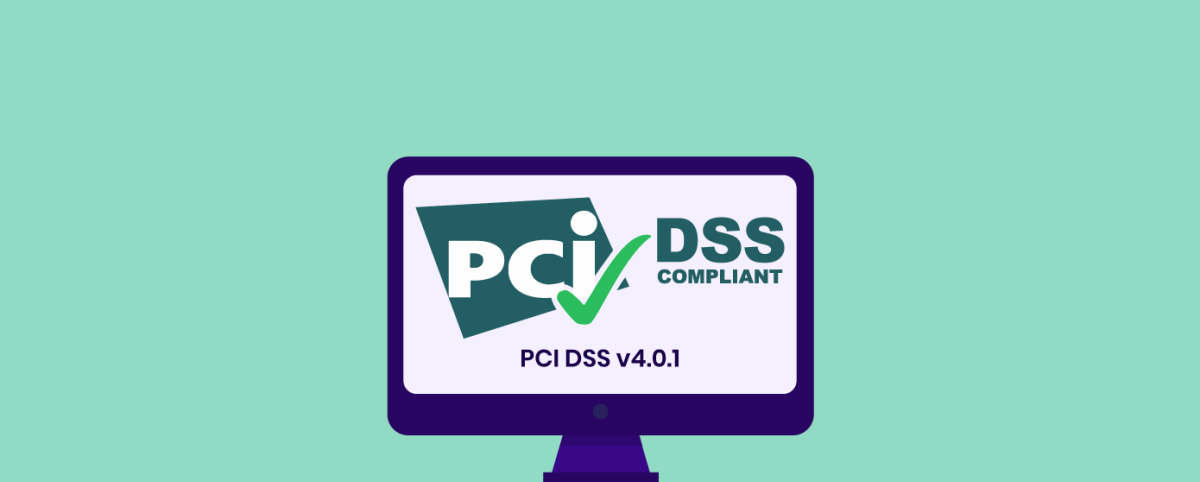Compliance vs. Non-Compliance: What It Really Costs Your Business
Is compliance optional? Not when millions are at stake.
When it comes to regulatory mandates like PCI DSS, HIPAA, and GDPR, businesses face a clear choice: comply or face the consequences. While compliance may seem costly upfront—non-compliance costs more.
What is Compliance vs. What is Non-Compliance?
Compliance means adhering to legal, regulatory, and industry-specific standards like HIPAA, PCI DSS, GDPR, SOX, and ISO 27001. It involves implementing the necessary policies, controls, and technologies to protect sensitive data, ensure privacy, and maintain operational transparency. Being compliant shows that your organization takes security and trust seriously — and that you’re prepared to face audits and legal scrutiny with confidence.
Non–compliance means failing to meet the rules and standards set by regulatory bodies to protect sensitive data and systems. These standards aren’t arbitrary—they exist because real threats exist.
Whether it’s the GDPR demanding transparent data practices or PCI DSS requiring strong protection for cardholder data, non-compliance signals gaps in your security posture. And those gaps can lead to data breaches, lawsuits, penalties, and loss of customer trust.
Common Triggers of Non-Compliance
- Neglecting regulatory mandates: Organizations may overlook specific requirements like breach reporting under HIPAA or encryption under PCI DSS. These aren’t optional—they’re essential to staying protected and compliant.
- Lack of security controls: Failing to implement basic defenses like web application firewalls (WAFs), encryption, or access control puts systems at immediate risk—and violates most security standards.
- Inconsistent policy enforcement: Having security policies on paper isn’t enough. If they aren’t enforced or understood, employees may mishandle data, ignore red flags, or fall victim to phishing attacks.
- No employee training: Human error is one of the biggest compliance risks. Without regular training, employees can unknowingly cause breaches by clicking malicious links or mishandling data.
- Poor incident response planning: When a breach occurs, a slow or uncoordinated response increases damage and indicates non-compliance, especially if breach notifications are delayed.
- Alert fatigue and mismanaged monitoring: If your team is overwhelmed by alerts or lacks proper threat monitoring, incidents can be missed—leading to unpatched vulnerabilities and potential violations.
In essence, non-compliance isn’t just about broken rules—it’s a reflection of deeper operational weaknesses.
Discover actionable strategies to manage compliance more efficiently
The Hidden and Direct Costs of Non-Compliance
1. Financial Penalties and Fines
Regulatory fines are the most visible—and painful—consequence of non-compliance. These penalties vary based on the law, the size of your business, and the severity of the violation.
| Regulation | Penalties (Inflation Adjusted) | Who’s Targeted | Key Violations | Relevant Requirement/Articles |
|---|---|---|---|---|
| HIPAA (USA) | Tier 1: $141–$71,162 Tier 2: $1,424–$71,162 Tier 3: $14,232–$71,162 Tier 4: $71,162–$2,134,831 Annual Cap: $2,134,831 |
Covered Entities and Business Associates (e.g., hospitals, insurers) | Lack of safeguards Delayed breach reporting Mishandling PHI Lack of training Willful neglect |
HIPAA Privacy, Security, and Breach Notification Rules |
| PCI DSS | 1–3 months: $5,000–$10,000/month 4–6 months: $25,000–$50,000/month 7+ months: $50,000–$100,000/month |
Merchants, Payment Processors | Storing cardholder data improperly Missing vulnerability scans No access controls or logging |
PCI DSS Requirement Sections 1–12 |
| GDPR (EU) | Tier 1: Up to €10M or 2% of global annual revenue Tier 2: Up to €20M or 4% of global annual revenue |
Data Controllers and Processors | Tier 1 Violations: Improper processing basis Lack of data protection policies Certification/monitoring failures Tier 2 Violations: Illegal data processing Consent issues Violation of user rights Unauthorized data transfers |
Tier 1: Articles 8, 11, 25–39, 41–43 Tier 2: Articles 5–7, 9, 12–22, 44–49 |
| NIS2 (EU) | Administrative fines up to €10M or 2% of global turnover | Essential and important entities in critical sectors (e.g., energy, health, banking) | Lack of cyber hygiene No incident notification No risk assessment Inadequate governance |
Articles 21–23, 26–28 |
Take PCI DSS, for instance. If your business stores cardholder data without proper safeguards, you may be fined up to $100,000 per month. But if that non-compliance leads to a breach, the financial toll is far greater.
The 2013 Target breach, caused by a failure to secure vendor access, exposed 40 million payment cards and cost the company nearly $292 million in legal fees, settlements, and compensation.
Likewise, Meta was fined $1.3 billion in 2023 for violating GDPR rules by transferring user data to the U.S. without proper safeguards. These cases highlight that fines are just the beginning—the real damage often lies in what comes after.
2. Security Breaches and Remediation Costs
Security standards exist for a reason: to keep your systems safe. Ignoring them increases the chance of being breached—and when it happens, the cleanup is never cheap.
A notable example is Premera Blue Cross, fined $6.85 million in 2020 after failing to encrypt and monitor patient data. Nearly 10 million patient records were exposed. The fine was just one part of the cost—additional spending went into forensic investigations, notifying customers, strengthening security, and regaining public trust.
The financial strain of remediation – consulting fees, breach notifications, legal support, system upgrades often surpasses the initial fine.
3. Legal Liabilities
Depending on the regulatory body, non-compliance can lead to civil lawsuits, government investigations, or even criminal charges.
HIPAA distinguishes between civil and criminal violations. If an organization is found to be willfully negligent, it may face jail time for its executives or responsible officers.
Other regulations, like SOX, hold company leadership accountable for ensuring secure financial systems. Any executive who signs off on false compliance statements risks not only company-wide penalties but also personal legal consequences.
In some industries, repeated violations may result in injunctions, license suspensions, or product recalls—halting business operations altogether.
4. Damage to Reputation and Customer Trust
Customers today are increasingly cautious about who they trust with their data. A single compliance failure can undo years of brand building.
Consider Equifax’s 2017 breach, which compromised personal data of over 147 million people. Although they eventually paid a $575 million settlement, the blow to their reputation was harder to repair.
Loss of trust leads to customer churn, negative press, and reduced investor confidence—especially for digital businesses that rely on user data and engagement.
5. Operational Disruption and Resource Drain
Regulatory investigations and remediation efforts aren’t just costly—they’re disruptive. Teams must divert time and energy from product development, customer support, and strategy to handle audits, document findings, and redesign systems.
For example, companies regulated by the FDA may face production shutdowns or product recalls if found to be non-compliant. These interruptions create ripple effects across supply chains, inventory levels, and customer satisfaction.
The time lost in dealing with compliance failures can put your entire business strategy off-track.
6. The Long-Term Cost Comparison
It’s a myth that compliance is too expensive. In fact, a Ponemon Institute study revealed that the average cost of compliance is $5.5 million, whereas the cost of non-compliance averages $15 million.
Compliance vs Non-Compliance at a Glance
| Aspect | Compliance | Non-Compliance |
|---|---|---|
| Initial Investment | Moderate – tools, audits, training | Low – until a violation occurs |
| Long-Term Cost | Predictable and controlled | High – fines, breaches, legal action |
| Business Reputation | Enhanced trust and brand value | Damaged trust, churn, negative press |
| Legal Standing | Protected under regulations | Exposed to lawsuits and regulatory penalties |
| Operational Impact | Minimal with proactive planning | Major disruptions and unplanned downtime |
The difference lies not just in fines, but in operational downtime, lost business opportunities, and reputational fallout.
Dive deep into how compliance regulations drive application security.
How AppTrana WAAP helps in compliance
The cost of compliance is always far less than the cost of non-compliance. Fines, recovery costs from breaches, reputational damage, and operational disruptions can add up quickly, making it clear that investing in the right security tools and processes is crucial. Compliance with standards like PCI DSS, HIPAA, ISO 27001, NIS2, and GDPR requires ongoing, proactive measures to ensure systems are continuously secure and compliant.
AppTrana WAAP is designed to simplify this challenge by offering AI-powered continuous compliance for web apps and APIs.
Regulations like PCI DSS (Requirement 11.2) and ISO 27001 (A.12.6.1) require regular identification of vulnerabilities in web applications.
AppTrana’s inbuilt DAST scanner runs continuously to detect known and emerging vulnerabilities in your web assets. It eliminates the need for external scanners – reducing both cost and complexity.
For deeper inspection, AppTrana blends automation with expert-led manual penetration testing to uncover complex issues and business logic flaws, aligning with regulatory demands for thorough assessments.
According to PCI DSS Requirement 6.6, organizations must protect web apps from attacks using security controls like a WAF. AppTrana’s fully managed WAF provides always-on, expertly tuned protection against OWASP Top 10, zero-days, and bot attacks.
With a managed WAF, you avoid the cost of hiring specialized resources or relying on inconsistent configurations all while staying aligned with compliance mandates.
Standards like GDPR and NIS2 expect organizations to act promptly on known vulnerabilities.
AppTrana’s SwyftComply guarantees autonomous remediation of open vulnerabilities through virtual patches or WAF rules within 72 hours. Once resolved, you get a Zero Vulnerability Report-a powerful, audit-ready proof of compliance. This eliminates prolonged exposure windows and prevents regulatory scrutiny due to delayed action.
Most standards including HIPAA (164.312(b)), PCI DSS (10.3), and ISO 27001 (A.12.4) require log retention, event tracking, and real-time monitoring.
AppTrana offers:
- A centralized dashboard to monitor threats, mitigations, and security posture
- Real-time alerts and downloadable reports tailored to compliance audits
- Continuous log analysis to detect anomalies and support forensic investigations
This level of visibility and automation means you don’t have to manually piece together reports or dig through logs-saving time, money, and stress during audits.
Compliance frameworks mandate a blend of automated tools (for continuous coverage) and manual intervention (for depth and context). Managing this manually across different vendors or tools is sometimes time-consuming and expensive.
But with AppTrana WAAP, you get an all-in-one solution. This reduces the overhead of managing multiple tools, avoids penalties for delays or negligence, and proves to regulators that you’ve taken all necessary steps.
In essence, AppTrana not only minimizes the cost of compliance it makes non-compliance nearly impossible.
Stay tuned for more relevant and interesting security articles. Follow Indusface on Facebook, Twitter, and LinkedIn.


 April 24, 2025
April 24, 2025






